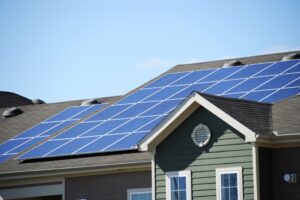Alberta 
‘We won’t accept any games’: Kenney wants competition bureau to probe Alberta’s high gas prices
 University of Calgary economist Trevor Tombe said the main reason prices remain high is retailers have set high margins for fuel. Earlier this year, the province introduced a tax break that saw the 13 cents per litre provincial tax on gasoline temporarily removed as West Texas Intermediate gas continued to trade at high prices. Premier Jason Kenney said at the time the province would be watching retailers closely to ensure those savings were passed on to the consumers. Tombe said the government should start exploring why margins are as high as they are, adding it the province improve data collection and reporting around gas prices; he wonders if there are underlying market factors at play keeping the margins high and all it would take is for one or two retailers to undercut the others to cause a domino effect of lower prices.
University of Calgary economist Trevor Tombe said the main reason prices remain high is retailers have set high margins for fuel. Earlier this year, the province introduced a tax break that saw the 13 cents per litre provincial tax on gasoline temporarily removed as West Texas Intermediate gas continued to trade at high prices. Premier Jason Kenney said at the time the province would be watching retailers closely to ensure those savings were passed on to the consumers. Tombe said the government should start exploring why margins are as high as they are, adding it the province improve data collection and reporting around gas prices; he wonders if there are underlying market factors at play keeping the margins high and all it would take is for one or two retailers to undercut the others to cause a domino effect of lower prices.
Source: The Calgary Herald
Electricity Prices for Alberta
The Alberta power pool price averaged 14.155 cents per kWh in July 2022. This price is 1.247 cents higher than last month’s average. The pool price has averaged 10.657 cents per kWh over the last 12 months.
As of August 1, 2022, the forward market was predicting electricity prices for the calendar years of 2022, 2023, 2024, 2025, 2026, and 2027. These prices are 13.459, 9.543, 7.300, 6.675, 6.500, and 6.700 cents per kWh respectively.
Gas Prices for Alberta
Direct Energy’s gas rate for July 2022 was $8.324 per GJ in Alberta. The August 2022 rate has been set at $5.797 per GJ. Alberta gas prices have averaged $5.222 per GJ over the last 12 months.
As of August 3, 2022, the forward market was predicting gas prices for the calendar years of 2022, 2023, 2024, 2025, 2026, and 2027. These prices are 6.03, 4.89, 4.36, 4.42, 4.45, and 4.47 cents per GJ respectively.
British Columbia 
First Nations clean-energy projects funded in B.C.’s Interior, North
The province is partnering with communities throughout B.C. to develop Indigenous-driven energy projects that align with CleanBC, the Province’s plan to build a cleaner future and a stronger, more resilient economy. The First Nations Clean Energy Business Fund (FNCEBF) supports projects that promote energy efficiency and replace diesel dependency with renewable energy in areas such as solar, ocean thermal, wind energy, biomass, run-of-river hydroelectric power and energy-efficiency planning. In the past year, the fund has provided more than $3.8 million to support new capacity and equity projects in 27 First Nations communities throughout the province
Source: BC Gov News
Ontario 
Ontario could be entering an energy supply crisis. Here’s what you need to know
Ontario’s power grid is among the cleanest in the world and the tool by which Ontario achieves all its climate goals. The province’s thirst for clean energy to power a growing clean economy and electric transportation industry is quickly outpacing supply. By 2025, Ontario will be temporarily without a significant amount of its nuclear energy and so far plans to replace it with less clean, more controversial natural gas. Alternative energy sources and solutions are sparse.
Source: The Narwhal
Electricity Prices for Ontario
The Hourly Ontario Energy Price (HOEP) was an average of 5.769 cents per kWh in July 2022. This price is 2.287 cents higher than last month’s 3.482 cents per kWh. The twelve-month moving average was 3.772 cents per kWh up to July 2022.
The Actual Rate for the Global Adjustment rate Class B for June 2022 was set at 7.868 cents per kWh. The Global Adjustment is an additional charge paid by non-regulated customers. (Source: IESO)
Saskatchewan 
SaskEnergy rebate helps Saskatchewan homeowners save money

SaskEnergy is committing $3.75 million in 2022-23 to help customers save energy and reduce emissions through its Residential Equipment Replacement Rebate program. The residential rebate program encourages homeowners to invest in high-efficiency natural gas equipment with the goal of reducing end-use greenhouse gas emissions by 19,000 tonnes of CO2e this year, which is equivalent to taking 4,100 vehicles off the road. Homeowners who qualify for the rebate will continue to save energy and money and reduce their end-use emissions for the life of the equipment that they install.
Source: SaskEnergy
Manitoba 
Winnipeg has a shiny new plan to get to net-zero emissions. Here’s what you need to know
The City of Winnipeg is taking its next steps towards a net-zero emissions future; a committee of council unanimously approved an ambitious, multi-billion dollar ‘roadmap’ Tuesday, with hopes of getting there by 2050. Climate and environment advocates lauded the report at a water, waste, riverbank management and environment committee meeting Tuesday, celebrating its detailed financial modelling and holistic approach to emissions reduction. The roadmap recommends fully electrifying transit by 2035, increasing the share of trips made by transit or active transportation by 2050, and electrifying both municipal car fleets and private commercial vehicles between 2035 and 2050.
Source: The Narwhal
New Brunswick 
Electric vehicle owners call for more quick charging stations in New Brunswick
 NB Power will be installing 52 new electric vehicle chargers across the province using a $350,000 investment from the federal government’s zero-emission vehicle infrastructure program. The chargers, which will all be available by February 2024, will primarily be used to charge NB Power’s fleet vehicles, as well as vehicles used by NB Power employees. NB Power representative Jean-Pierre Ouellette said that the chargers would be available for use by the general public in certain places. Electric vehicle owners are calling for an increase in infrastructure in order to keep up with the rising popularity of the vehicles. Most of the charging stations in the province are Level 2 chargers, which charge an EV over six to eight hours; there is a greater need for access to faster Level 3 chargers, which charges up an EV in around 15-45 minutes.
NB Power will be installing 52 new electric vehicle chargers across the province using a $350,000 investment from the federal government’s zero-emission vehicle infrastructure program. The chargers, which will all be available by February 2024, will primarily be used to charge NB Power’s fleet vehicles, as well as vehicles used by NB Power employees. NB Power representative Jean-Pierre Ouellette said that the chargers would be available for use by the general public in certain places. Electric vehicle owners are calling for an increase in infrastructure in order to keep up with the rising popularity of the vehicles. Most of the charging stations in the province are Level 2 chargers, which charge an EV over six to eight hours; there is a greater need for access to faster Level 3 chargers, which charges up an EV in around 15-45 minutes.
Source: Global News
Prince Edward Island 
How Summerside — and Prince Edward Island — are leading the energy revolution in Canada
On a small island, and in an even smaller city, a major energy revolution is taking form. From wind farms to giant solar parks, big things are happening in Summerside, PEI, a city on the East Coast of Canada with a can-do attitude, and a will to act as a case study for the rest of the country on how to unleash the renewable energy revolution. It’s called the Summerside Sunbank and once it’s fully operational, about 65 per cent of Summerside’s power will come from renewable energy produced locally.
Source: CBC
Québec 
Why American fossil fuel companies and environmentalists are ganging up on Hydro-Québec
The New England Clean Energy Connect transmission line – NECEC, has faced objections and roadblocks from an unlikely opposition that unites conservationists, oil and gas companies, First Nations and residents on both sides of the American political aisle. In 2018, Hydro-Québec, was contracted by the New England-based energy company Avangrid to transport 1.2 gigawatts of hydroelectricity from Québec to Massachusetts. This was meant to be done via a 233-kilometre-long transmission line, being built by Avangrid, also the parent company of Central Maine Power, and Hydro-Québec, which produces 94 per cent of Québec’s power and is owned by the provincial government. A referendum last November gave voice to Mainers who voted 60 per cent in favour of stopping the project; At that point, the Québec company had spent in the neighbourhood of $500 million clearing land and building infrastructure,
Source: The Narwhal
Newfoundland and Labrador 
Three charges laid for 2019 spill from Newfoundland’s Hibernia offshore oil platform
Newfoundland and Labrador’s offshore oil regulator is laying charges in connection with a July 2019 oil spill in the Hibernia field, which sits about 315 kilometres off the coast of St. John’s; the incident resulted in an estimated 12,000 litres of oil spilling into the Atlantic Ocean. The Canada-Newfoundland and Labrador Offshore Petroleum Board says it charged Hibernia Management and Development Company with three offences related to the spill. The regulator alleges that the company failed to stop work or activity that was likely to cause pollution and that it didn’t follow risk-management processes. The third charge is connected to an alleged violation of the Canada-Newfoundland and Labrador Atlantic Accord Implementation Act, which prohibits spills in the province’s offshore area.
Source: The National Post
Nova Scotia 
Ottawa earmarks $255 million on green energy projects in Nova Scotia
Prime Minister Justin Trudeau on Thursday promised $255 million in green energy funds, for clean energy projects in Nova Scotia, but he also said the idea of upgraded facilities to help ship fossil fuels to Europe in the “very short term” is back on the table. Up to $125 million will go to wind projects to provide clean power to around 350,000 homes in Nova Scotia and will create about 500 jobs and deliver benefits to local Indigenous communities. As well, up to $130 million will help Nova Scotia Power install batteries to store clean energy at four sites across the province.
Source: Global News
Nunavut
Grants available to install renewable energy systems on cabins and homes
 Cabin owners can apply to the Department of Environment’s Climate Change Secretariat for a one-time grant of up to $5,000 to install solar or wind power systems. Homeowners located within municipal boundaries in Nunavut can apply to the Nunavut Housing Corporation for a one-time grant of half the cost, to a maximum of $30,000, towards a solar energy system. Before installing renewable energy, homeowners require Qulliq Energy Corporation’s approval to join the Net Metering program, which gives renewable energy generators credit for putting surplus energy into the power grid.
Cabin owners can apply to the Department of Environment’s Climate Change Secretariat for a one-time grant of up to $5,000 to install solar or wind power systems. Homeowners located within municipal boundaries in Nunavut can apply to the Nunavut Housing Corporation for a one-time grant of half the cost, to a maximum of $30,000, towards a solar energy system. Before installing renewable energy, homeowners require Qulliq Energy Corporation’s approval to join the Net Metering program, which gives renewable energy generators credit for putting surplus energy into the power grid.
Source: Government of Nunavut
Northwest Territories 
Cleanup of historic oil spill in Inuvik underway, source still unknown
There’s an iridescent shine on the wet pavement near the foot of the Northwest Territories Power Corporation property along the Mackenzie River. It comes from a historic oil spill that was only discovered last week; it isn’t clear the exact source of the spill is, it’s possible the oil came from an old pipe used to offload oil from barges in the 1970s and ’80s. Now, it’s being contained and cleaned up. Environment and Climate Change Canada said it is aware of the situation and is responding. It has also sent environmental enforcement officers to the site to collect samples and gather facts regarding the incident.
Source: CBC
Yukon 
Generating station signing ceremony
The signing event occurred during the Champagne and Aishihik First Nations (CAFN) General Assembly at the Takhini River subdivision. “Fifty years since the construction of the Aishihik Generating Station, we are at a major turning point as we sign these agreements,” CAFN Chief Steve Smith said Monday. The CAFN understand the dam “is vital to power the Yukon, and we know that together we can do much better to reduce its harms to CAFN lands, water and people,” Smith added. The CAFN, the territory and the Yukon Energy Corp. (YEC) have carried out a long and thorough process to reach these agreements. It it’s a significant power source for the Yukon’s energy system. The facility is capable of producing 37 megawatts of power and is critical in meeting peak winter demand.
Source: Government of Yukon